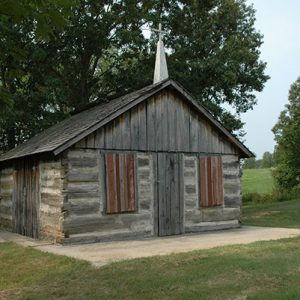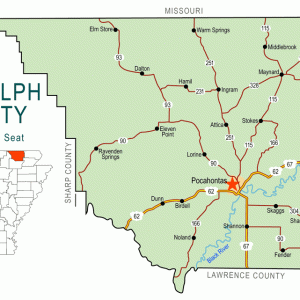calsfoundation@cals.org
Maynard (Randolph County)
| Latitude and Longitude: | 36°25’11″N 090°53’50″W |
| Elevation: | 384 feet |
| Area: | 1.17 square miles (2020 Census) |
| Population: | 379 (2020 Census) |
| Incorporation Date: | October 17, 1895 |
Historical Population as per the U.S. Census:
|
1810 |
1820 |
1830 |
1840 |
1850 |
1860 |
1870 |
1880 |
1890 |
1900 |
|
– |
– |
– |
– |
– |
– |
– |
– |
– |
358 |
|
1910 |
1920 |
1930 |
1940 |
1950 |
1960 |
1970 |
1980 |
1990 |
2000 |
|
295 |
210 |
259 |
266 |
216 |
201 |
224 |
381 |
354 |
381 |
|
2010 |
2020 |
|
|
|
|
|
|
|
|
|
426 |
379 |
|
|
|
|
|
|
|
|
Maynard is in northern Randolph County, located at the intersection of State Highways 328 and 115. The town is known for its academic heritage and for preserving the history of the area with the Maynard Pioneer Park and Museum.
Three freshwater springs have long made the area of Maynard desirable for brief refreshment or for more permanent settlement. When the United States acquired the Louisiana Purchase in 1803, Osage hunters and travelers frequented the area, although their homes were farther north in Missouri. Early highways crossed near the springs—the Old Military Road (also known as the Southwest Trail) that connected St. Louis, Missouri, to parts of the Red River valley and Texas, passed near the springs, where it intersected the road connecting Pocahontas (Randolph County) to Doniphan, Missouri. Another highway ran past the springs, linking Columbia (Randolph County) to Perkins Ferry (Randolph County).
John Maynard, a Civil War veteran, moved to the crossroads in 1872 and founded a community he named New Prospect. Maynard built both a cotton gin and a store on his property. A second store was added in 1884 by E. C. Mock. That same year, James Brockett arrived and installed a flour, saw, and grist mill. In 1885, the settlement applied for a post office, but the postal service gave the new post office the name Maynard rather than New Prospect. Albert Hatley built a cotton gin in Maynard in 1888. At that time, Maynard had two stores, a hotel, a Baptist church, and a public school.
In 1894, Eli Abbott (or Abbot) opened a school in Maynard that was known first as the Abbott Institute. The school taught upper grades and also operated a teachers’ institute (then called a “normal school”) during the summer months. In 1900, the Baptist churches of Arkansas acquired the institute and renamed it Maynard Baptist Academy; it was later renamed Ouachita Baptist Academy because of its association with what is now Ouachita Baptist University (OBU) in Arkadelphia (Clark County).
In 1895, a newspaper, the Pilot, was founded in Maynard by R. L. Williford and S. O. Pennich. The paper was moved to Pocahontas but returned to Maynard in 1897, at which point the name was changed to Northeast Arkansas Enterprise. The Bank of Maynard was established by Mock, Abbot, and J. M. C. Lehmen in 1899.
A telephone system was built in Maynard in 1920, with its switchboard located on the second floor of the bank building. In 1925, E. A. Jackson and Ethel Jackson opened the Maynard Motel. At that time, businesses in the city included a drugstore, five mercantile stores, a café, a barber shop, a garage, two blacksmiths, and two service stations; there were also three churches. In 1928, the Maynard Ouachita Academy closed, and the building was purchased by the public school district. The Depression crippled both agriculture and businesses in Maynard, although the bank survived; it was moved to Pocahontas and combined with a bank there around 1940. A small jail was built in 1936 and used until 1953; the building is now a tourist attraction. Banking returned to Maynard in 1975 with the opening of a branch of the Farmers and Merchants Bank. In 1976, a new community building was constructed.
Maynard Pioneer Museum and Park was created in 1980, featuring historic items centered around a log cabin dated to the nineteenth century. Pioneer Days has been celebrated in Maynard every September since 1981, drawing from 5,000 to 8,000 people into the community.
A volunteer fire department for northeastern Randolph County was organized in Maynard in 1985. A new sewer system was built in 1989; at that time, businesses in Maynard included two service stations, two cafés, a car wash, a beauty shop, a dental clinic, a video shop, a welding shop, a bank, and several stores.
By 2010, the population of Maynard had grown to 426. In the twenty-first century, there are three churches, a bank, a post office, several stores, a senior center, and a sawmill. There are also construction companies, a trucking company, a flower shop, and an auction service. The school district counted 460 students in the 2013–14 school year.
For additional information:
Cook, Regina, et al. History of Randolph County, Arkansas. Dallas, TX: Curtis Media Corporation, 1992.
Dalton, Lawrence. History of Randolph County, Arkansas. Little Rock: Democrat Printing and Lithographing Company, 1946.
Randolph County, Arkansas, History and Families. Paducah, KY: Turner Publishing Company, 2001.
Steven Teske
Butler Center for Arkansas Studies
 Abbott Institute Arch
Abbott Institute Arch  Maynard Pioneer Museum
Maynard Pioneer Museum  Maynard Pioneer Museum Grounds
Maynard Pioneer Museum Grounds  Randolph County Map
Randolph County Map 




Comments
No comments on this entry yet.